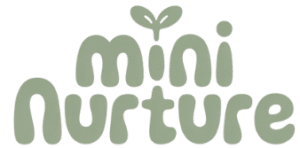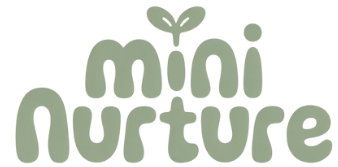Caring for toddler hair can seem tricky at first, but understanding its unique needs makes styling easier and more fun. Toddlers’ hair is often delicate and requires gentle handling with simple, manageable styles that keep it neat without causing discomfort.

Choosing hairstyles that suit a toddler’s hair texture and length ensures a comfortable fit and lasting hold throughout the day. Using basic accessories like bows, headbands, or clips adds a creative touch without overwhelming the hair. With the right techniques, styling becomes a quick process that both parent and child can enjoy.
Toddlers may have varying hair types and preferences, so patience and practice are key. Offering a range of easy styles can help keep hair healthy and looking its best while allowing a little one’s personality to shine.
Key Takeways
- Toddler hair needs gentle care and simple styling for comfort.
- Selecting styles and accessories that fit hair type improves durability.
- Patience and practice help create a positive hair routine experience.
Understanding Toddler Hair

Toddler hair changes a lot in the first years. It grows in stages, and its texture can shift from soft to thicker. Toddlers may also face common hair issues like tangles or pulling. Proper care helps keep their hair healthy and comfortable.
Hair Growth and Texture in Toddlers
Toddler hair grows in three phases: newborn, infant, and toddler stages. At first, hair is soft and fine, often called “baby fuzz.” As toddlers grow, hair becomes thicker, fuller, and may change texture due to genetics and nutrition.
Hair texture can switch from straight to wavy or curly. This change usually happens over months or years. The rate of hair growth varies between children but is generally steady in toddlerhood.
It’s important to note that cutting toddler hair does not affect its thickness or texture, which is a common myth. Parents can decide when to trim hair based on tangling, discomfort, or style preference rather than belief in hair growth changes.
Common Toddler Hair Concerns
Toddlers often have hair that tangles easily because it is fine and soft. Frequent gentle brushing prevents painful knots. Some toddlers pull their hair due to stress or curiosity, which parents should watch closely.
Hair loss or thinning in toddlers can be normal from friction with surfaces or mild scalp infections. If hair loss is severe or persistent, medical advice is important.
Body hair on toddlers varies and is a normal part of development. Understanding these common concerns helps caregivers provide the right comfort and care without worry.
Safe Hair Care Practices
Using gentle, tear-free shampoos designed for toddlers is best to protect sensitive skin. Hair should be washed just enough to keep it clean without stripping natural oils.
Use soft brushes or wide-tooth combs to reduce pulling and breakage. When brushing, start at the ends and work upward to avoid tugging.
Avoid tight hairstyles that put pressure on the scalp. Accessories like soft bows or clips can keep hair tidy without damage. Simple, creative styles make hair care easier while protecting toddler hair health.
For more detailed hair growth information, explore toddler hair growth stages and care.
Toddler Hairstyles and Styling Techniques

Toddlers’ hair needs gentle care and simple styles that stay neat through their busy days. Techniques focus on ease, comfort, and protecting delicate strands while giving variety. Using basic tools and some creativity helps manage different hair lengths and textures effectively.
Easy Everyday Hairstyles
Everyday toddler hairstyles should be quick, low fuss, and secure. Common choices include simple ponytails, loose braids, and half-up styles. Starting with slightly damp hair makes combing easier and reduces breakage.
Using soft hair ties and clips prevents damage. Accessories like chiffon bows or headbands can add a touch of charm without extra effort. Parents often use spray bottles to lightly mist hair before styling for better hold.
Slicking back hair gently with a bit of leave-in conditioner or detangling spray helps control flyaways. Styles like the 3 Section Segmented Ponytail keep hair tidy and are perfect for medium to long hair lengths.
Braided Ponytail Variations
Braided ponytails offer a stylish way to manage toddler hair while keeping it secure. Starting with a regular ponytail, hair can be divided and braided in different patterns like classic three-strand, fishtail, or Dutch braids.
Braiding reduces hair manipulation during the day, lowering the chance of tangles and damage. It also keeps hair off the face and neck, increasing comfort for active toddlers.
These styles can be simple or more intricate, depending on the child’s hair length and texture. Adding small elastic bands at the ends or colorful ribbons provides extra hold and decoration.
Styling for Short Toddler Hair
Short toddler hair needs special care and simple approaches. Styles like small ponytails, hair clips, or the “Whale Spout” — a small tuft tied up — work well for very short or fine hair.
Keeping hair slightly damp helps style hold better. Parents should use soft brushes and avoid tight elastics to protect delicate follicles.
For short hair, minimal products are best. Light leave-in conditioners or water sprays keep hair soft and manageable without weighing it down. These easy styles save time and reduce fussiness during hair routines.
Special Occasion Hair Ideas
For special events, toddler hairstyles can be a bit more detailed while still gentle on the hair. Braided crowns, twisted half-updos, and decorative buns create a polished look without heavy styling.
Using soft accessories like fabric bows or small floral clips can enhance the style without discomfort. Protective styles like Bantu knots help maintain hair health and add texture variety.
A key tip is to start with clean, detangled hair, lightly dampened if needed. Gentle styling methods keep toddlers comfortable and looking neat through celebrations. These hairstyles balance elegance with ease for parents and kids alike.
For more hairstyles and ideas, check out a collection of easy toddler hairstyles.
Hair Accessories and Creative Touches

Adding hair accessories is a great way to style toddler hair with flair while keeping it tidy. Proper use, safety, and storage of these items help maintain their condition and keep toddlers comfortable.
Choosing and Using Hair Bows
Hair bows should be lightweight and made from soft materials to avoid pulling or irritating a toddler’s delicate scalp. Look for bows with smooth edges and strong, but gentle clips or elastic bands that hold hair securely without causing pain.
Colors and patterns can match outfits or add a fun pop of color. When placing bows, avoid tight spots near the scalp or too close to the roots to prevent discomfort and hair breakage. Bows can be combined with other accessories like clips or headbands for more creative styling.
Choosing bows with simple clasps makes them easier to attach and remove. Parents should also consider bows that are machine washable or easy to spot clean for hygiene.
Incorporating Hair Accessories Safely
Safety is essential when using hair bows and other accessories on toddlers. Avoid very small parts like beads or decorations that could come loose and become choking hazards.
Materials should be non-toxic and free of sharp edges or stiff wires. It is important to check bows regularly for wear and tear and replace any that are damaged.
When styling, ensure bows and clips do not pull tightly on the hair, which can cause headaches or hair loss. Keep accessories away from toddlers during naps or when unsupervised to prevent accidental swallowing or injury.
Organizing and Storing Hair Bows
Proper storage keeps hair bows in good shape and easy to find. A compartmentalized box or organizer with sections for different sizes and colors helps maintain order.
Keeping bows attached to cards or strips inside a storage box prevents clips from tangling or getting lost. Hanging organizers with clear pockets are also effective for quick access.
Regular cleaning of bows is important to remove dirt or oils that build up over time. Soft cloth cleaning or gentle hand washing is recommended to preserve fabric and clips.
For parents who use large collections of hair bows, labeling storage sections by type or color speeds up daily hairstyle routines.
Frequently Asked Questions

Toddler hair changes in texture over time, often becoming thicker and coarser. Simple hairstyles suit short hair, and care should avoid damage, especially with delicate hair types. Toddlers may have little hair initially, and the timing of the first haircut varies. Some changes in body hair can raise health questions.
At what age can I expect my toddler’s hair texture to change?
Hair texture often begins to change between ages two and five. Fine hair may become thicker and coarser as toddlers grow. This change happens gradually and can vary from child to child.
What are some simple hairstyles for a toddler with short hair?
Short hair suits styles like small ponytails, side braids, or simple clips to keep hair out of the face. These styles are low maintenance and help reduce tangling while being comfortable for toddlers.
How can I style my toddler girl’s black hair without causing damage?
Use gentle techniques like wide-tooth combs for detangling and avoid tight hairstyles that pull on the scalp. Regular moisturizing and using child-safe products help keep hair healthy and prevent breakage.
Is it common for toddlers to have very little hair?
Yes, many toddlers have sparse or fine hair in early years. Hair growth rates vary due to genetics, health, and nutrition. Sparse hair is usually normal and improves with time.
What’s the suitable age for a toddler’s first haircut?
Most toddlers have their first haircut between 1 and 3 years old. The timing depends on hair length, tangling issues, and the child’s comfort. Cultural traditions can also influence the choice.
Are there any health concerns with increased body hair in toddlers?
Increased body hair can be normal but sometimes signals underlying health issues. If excessive hair growth appears suddenly or is accompanied by other symptoms, it is best to consult a healthcare provider.

